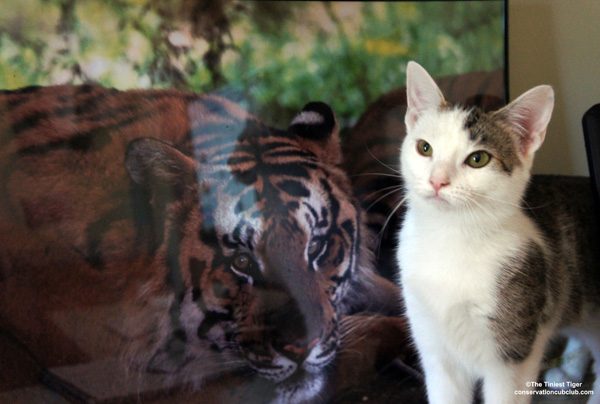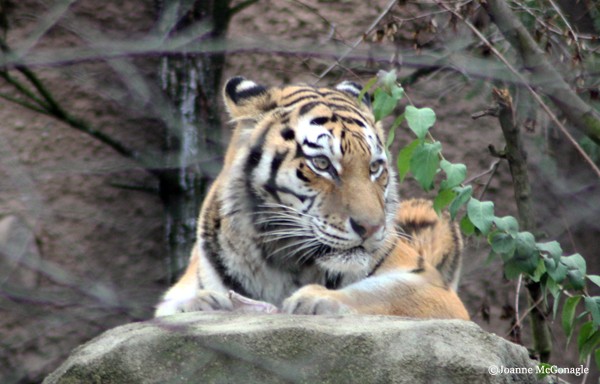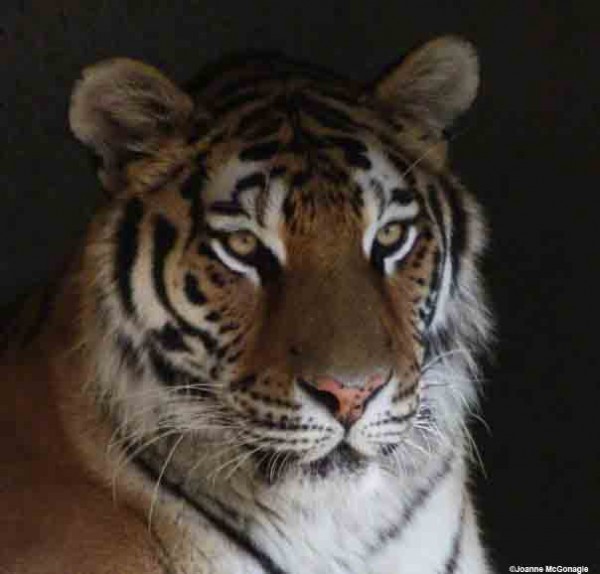
Tiger Names For Your Cat.
Tiger have always held a great fascination for people, capturing the imagination and evoking a sense of power, beauty, and mystery. These magnificent creatures are known for their impressive size, striking appearance, and fierce hunting skills. Throughout history, various cultures have attributed symbolic meanings to tigers and often featured them in myths, legends, and stories.
Understanding the different species of tigers and their unique characteristics can provide valuable insights into the inspiration behind their names. Each of the six currently recognized subspecies, including Bengal, Indochinese, Malayan, Siberian, South China, and Sumatran tigers, have distinct features and habitats. Additionally, famous tigers from literature and film such as Shere Khan from The Jungle Book and Tigger from Winnie-the-Pooh have further popularized and showcased the iconic appeal of these big cats.
When it comes to naming a tiger, the process involves considering factors such as their traits, cultural significance, and the context in which they appear. For example, in mythology, the name of a tiger might symbolize strength, courage, or protection. Meanwhile, contemporary pop culture might inspire more playful and creative monikers for these captivating creatures. Ultimately, the name chosen for a tiger often reflects human admiration and respect for these magnificent animals.
Key Takeaways
- Tiger names hold cultural and symbolic significance, usually reflecting their powerful and mysterious nature.
- Diverse tiger species and famous fictional tigers contribute to the popular perception and appeal of these animals.
- Naming a tiger involves considering various factors, including the animal’s traits, cultural context, and role in mythology or pop culture.
Understanding Tigers
Tigers are large, powerful predators that inhabit a variety of habitats, including jungles and forests. Known for their distinct orange fur with black stripes, they have a commanding presence and play a significant role in the ecosystems they inhabit.
One key aspect of understanding tigers is the role they play in their respective habitats. As apex predators, tigers sit at the top of their food chain, with a diet primarily consisting of large herbivores such as deer and wild boar. Tigers also consume smaller animals when the opportunity arises. By regulating the population of their prey, tigers help maintain a healthy balance in their ecosystems.
Tiger populations are spread across Asia, with significant variation between different subspecies based on geography. Currently, there are six recognized subspecies:
- Bengal tiger (Panthera tigris tigris)
- Indochinese tiger (Panthera tigris corbetti)
- Malayan tiger (Panthera tigris jacksoni)
- Siberian tiger (Panthera tigris altaica)
- South China tiger (Panthera tigris amoyensis)
- Sumatran tiger (Panthera tigris sumatrae)
The environment of the jungle presents various challenges for tigers, including constant competition for territory, food, and mates. Tigers are solitary animals, with each individual possessing a sizeable territory that it must defend from rivals. They rely heavily on their keen senses, strength, and camouflage to stalk and ambush their prey.
In recent times, tiger populations have faced numerous threats due in large part to human activity. Deforestation, habitat fragmentation, and illegal poaching have led to a sharp decline in their numbers, with some subspecies teetering on the brink of extinction. Conservation efforts are essential to ensuring the survival of these majestic predators and to maintain the balance within the ecosystems they inhabit.
Given their elusive nature, studying tigers in the wild can be challenging for researchers. However, the more we learn about their biology, behavior, and ecology, the better equipped we are to conserve and protect these remarkable creatures.

Distinct Tiger Species
Tigers are the largest species of big cats and can be found across various parts of Asia. While there are numerous subspecies of tigers, some of the most distinctive and well-known examples are the Bengal tiger and the Siberian tiger.
The Bengal tiger (Panthera tigris tigris) is predominantly found in the forested areas of India, Nepal, and Bangladesh. They are known for their striking orange coat with black stripes and a white belly. Bengal tigers are the most numerous of the tiger subspecies, but their population is still at risk due to poaching and habitat loss. These tigers are essential for maintaining the delicate balance in their ecosystem, and various conservation efforts are ongoing to protect their habitats and numbers.
The Siberian tiger (Panthera tigris altaica), also known as the Amur tiger, inhabits the northeastern regions of China and the Russian Far East. Their thick fur and large size are adaptations to the cold and harsh environments they call home. Siberian tigers are heavier than their Bengal counterparts and are also considered the largest of all tiger species. Although their numbers are lower than that of Bengal tigers, conservation efforts have seen a steady increase in their population in recent years.
Apart from the Bengal and Siberian tigers, other subspecies of tigers are found across Asia. Some examples include:
- Indochinese tiger (Panthera tigris corbetti): Found in Cambodia, Laos, Thailand, and Vietnam.
- Malayan tiger (Panthera tigris jacksoni): Native to the Malay Peninsula.
- South China tiger (Panthera tigris amoyensis): Critically endangered, with few individuals remaining in captivity.
Each tiger subspecies has evolved distinct features and adaptations that reflect their geographical distribution and habitat. Recognizing the differences between these subspecies is crucial, as it aids in the development of effective conservation strategies tailored to each specific population, ensuring that these majestic creatures continue to thrive in their natural environments.

Famous Tigers from Literature and Film
Literary Tigers
Shere Khan is a prominent tiger character from Rudyard Kipling’s “The Jungle Book.” Depicted as an antagonist, Shere Khan is a cunning and powerful tiger who creates conflict in the story.
Another well-known literary tiger is Tigger, a boisterous and friendly character from A.A. Milne’s “Winnie-the-Pooh” series. Tigger’s exuberance and love for bouncing make him an endearing and unforgettable character in children’s literature.
Hobbes is the loyal, intelligent, and imaginative tiger from Bill Watterson’s popular comic strip “Calvin and Hobbes.” As the best friend of the protagonist Calvin, Hobbes provides both comic relief and thought-provoking dialogue throughout the series.
Cinematic Tigers
Tony the Tiger is an iconic mascot for Kellogg’s Frosted Flakes cereal, known for his signature catchphrase, “They’re grrreat!” Mostly seen in commercials, his character represents fun, energy, and a passion for breakfast.
Sasha is a white tiger from the animated film “All Dogs Go to Heaven 2.” As the love interest of the film’s protagonist, Charlie, Sasha showcases a strong and independent personality, which complements the film’s theme of redemption and friendship.
Lastly, Puss in Boots is a swashbuckling, remarkably agile character from the “Shrek” film series and his own spinoff movie. Though technically a cat, his character draws inspiration from the overall feline family and demonstrates a playful mix of charm, humor, and wit.
Naming a Tiger
Naming a tiger can be an exciting task, whether it’s a fictional character, a mascot, or a beloved pet. There are many aspects to consider when choosing the perfect name, and some popular tiger names can provide inspiration.
Aspects to Consider
When selecting a tiger name, keep in mind the following aspects:
- Personality: Consider the personality traits of the tiger, such as being a fierce hunter or a gentle giant.
- Appearance: Think about the tiger’s physical characteristics, like its unique stripes or coloration.
- Origins: Reflect on the cultural or geographical background of the animal, as this could influence its name.
Popular Tiger Names
Here are some popular tiger names, along with a brief description of their meaning or origin:
- Ace: A cool, one-syllable name for a skilled hunter or agile tiger.
- Tigre and Tigress: Names that directly reference the animal’s species.
- Rajah: Rooted in Indian culture, meaning a king or prince.
- Sia: A short, simple name meaning “one who hunts” in an African language.
- Boo and Kip: Cute, playful names for a friendly or mischievous tiger.
- Nova, Shiva, and Thor: Names inspired by mythology or cosmic elements, signifying power and strength.
- Tigris: A nod to the historic region surrounding the Tigris River, where some of the earliest civilizations emerged.
- Ava and Nia: Feminine names with origins in different cultures, suitable for a tigress.
- Stripe: A direct reference to the tiger’s iconic markings.
- Bengal: Recognizing the most common subspecies, the Bengal tiger.
Some people may also choose popular human names or names inspired by famous cats. Examples include:
| Names | Inspired by |
|---|---|
| Carl | |
| Daniel | |
| Jasmine | Aladdin |
| Nala | The Lion King |
| River | |
| Simba | The Lion King |
| Venus | |
| Mia | |
| Ares | Greek Mythology |
| Athena | Greek Mythology |
| Ella | |
| Felix | Felix the Cat |
| Garfield | Garfield |
| Leo | Zodiac Sign |
| Tom | Tom and Jerry |
| Amber | |
| Clawdia | A pun on “Claudia” |
Remember, the perfect tiger name is one that resonates with you and captures the essence of the animal. Consider the various aspects mentioned above, and don’t be afraid to get creative with your choice.
Significance of Tiger Names in Mythology
Tigers have played an important role in various mythologies around the world. In Hindu mythology, they hold a prominent position as symbolic creatures associated with strength and power. The goddess Durga, who is a fierce warrior and the embodiment of feminine force, rides on a tiger as her steed. This displays the tiger’s role as a protector and symbol of courage.
In other mythologies, tigers have been given specific names to signify their importance and influence. In Chinese mythology, Byakko is the White Tiger, representing the west and the element of metal. As one of the Four Symbols, Byakko is considered a powerful guardian and is often depicted as a fearsome and noble creature.
Dawon is another mythical tiger with significant importance in ancient Indian and Tibetan mythologies. Also known as the Tibetan snow lion, this creature is seen as an emblem of reawakening and energy. In this context, the name Dawon mirrors the bravery and courage typically associated with tigers.
Moreover, tigers have found their way into popular culture and literature as well. For instance, in Edgar Rice Burroughs’ Tarzan series, the character often encounters a fierce and cunning tiger named Kali, which is inspired by the Indian goddess Kali. This depiction of the tiger as a powerful and dangerous antagonist exhibits the prevailing perception of the animal as an epitome of strength.
To conclude, the significance of tiger names in mythology is deeply rooted in their representation as powerful, courageous, and fierce beings. Throughout various cultures and mythological tales, these creatures have held symbolic meanings and have been given specific names, such as Byakko, Dawon, and Kali, to represent their unparalleled prowess.
Tigers in Pop Culture
Tigers have captured the imagination of people all over the world and have prominently featured in various forms of media and entertainment. One of the most well-known tigers in literature and film is Shere Khan from Rudyard Kipling’s The Jungle Book. This fearsome and cunning character demonstrates the power and prowess often attributed to tigers and has been a memorable figure in adaptations of the story.
In a more friendly and light-hearted depiction, we find Tigger from the Winnie the Pooh series by A.A. Milne. Unlike the realistic Shere Khan, Tigger is an anthropomorphic, bouncing, and energetic animal who brings joy and laughter to children through books, television shows, and movies. Tigger’s playful personality makes him an enduring and popular character for many generations of fans.
Another iconic tiger character is Tony the Tiger, the mascot of Kellogg’s Frosted Flakes cereal. Tony has appeared in various commercials and promotional materials since his introduction in the 1950s. With his catchphrase “They’re Grrreat!”, Tony represents the strength and vitality associated with tigers while promoting the product in a family-friendly manner.
While not a tiger per se, the character of Puss in Boots from the fairy tale first published by Charles Perrault in the 17th century also carries distinct feline traits. In the 2004 animated movie Shrek 2, Puss in Boots is depicted as a sword-wielding, cat-like creature whose stripe patterns and fierce bravery hint at a possible tiger influence. This charming character has since starred in his own movies, further cementing his place in popular culture.
Frequently Asked Questions

What are some popular names for baby tigers?
Baby tigers are often given names that reflect their fiery and majestic nature. Some popular names for baby tigers include Blaze, Tasha, Jasmine, Leo, and Raja. These names harness the power and beauty associated with these magnificent animals.
How can I generate unique tiger names?
To generate unique tiger names, consider combining elements from different cultures, languages, and mythologies. You could also draw inspiration from nature, astronomy, or even the attributes of the tiger itself. For instance, blending the Hindi word for ‘fire’ (Agni) with the Latin word for ‘star’ (Stella) might result in the unique name “Agnistella.”
What are some famous Bengal tiger names?
Famous Bengal tiger names often come from individuals that have captured the public’s attention, either through historical events, conservation efforts, or pop culture. Some notable Bengal tigers include Machli, a well-known tigress from India’s Ranthambore National Park, and Shere Khan, the fictional antagonist from Rudyard Kipling’s The Jungle Book.
What are Indian tiger names inspired by culture?
Indian tiger names can be inspired by the diverse languages, mythologies, and regional folklore that comprise India’s vast cultural tapestry. Names such as Baghira (from The Jungle Book), Indra (a powerful deity in Hindu mythology), and Kala (meaning ‘black’ in Hindi) all draw on the rich cultural history of India.
Are there any funny or quirky tiger names?
Though tigers are often associated with power and ferocity, there’s always room for some humor and lightheartedness when naming them. Funny or quirky tiger names can include puns, wordplay, or even juxtaposing their fierce nature with ironic names like Fluffy, Paws, or Whiskers. By thinking outside the box and incorporating a playful spirit, you can create memorable and amusing names for these incredible animals.